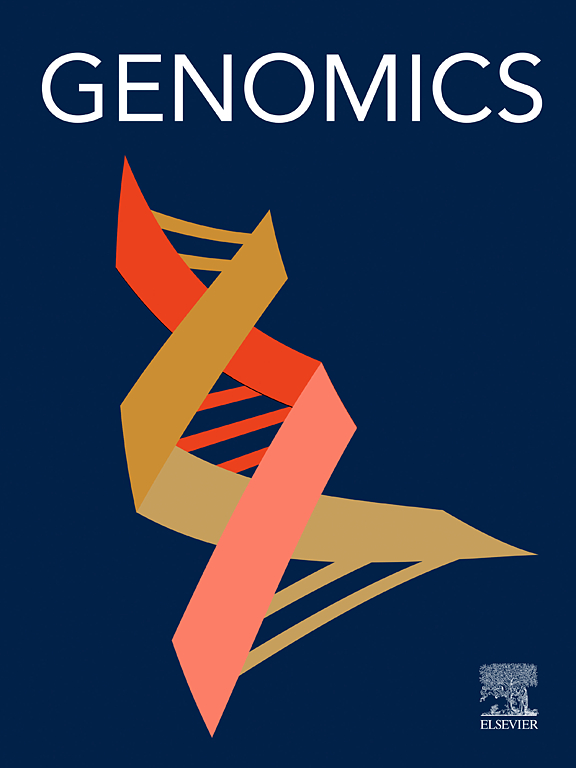比较转录组学分析揭示了胸火绒的生物发光相关基因
IF 3
2区 生物学
Q2 BIOTECHNOLOGY & APPLIED MICROBIOLOGY
引用次数: 0
摘要
萤火虫的生物发光依赖于发光器官的荧光素代谢。本研究应用RNA-seq技术比较了胸火蛾幼虫发光组织和非发光组织的转录组谱。筛选两个组织样本之间差异表达的基因,以确定参与荧光素代谢的候选基因。其中,半胱甘氨酸γ -裂解酶、4-羟基苯基丙酮酸双加氧酶和β-葡萄糖苷酶2在发光组中表达上调,而半胱氨酸双加氧酶1型在发光组中表达下调,提示这些基因可能参与了l -半胱氨酸和1,4 -苯醌等荧光素前体的合成。与非发光器官相比,发光器官中编码4-香豆酸辅酶a连接酶的几个基因表达上调,表明它们可能参与了2- s -半胱氨酸对苯二酚的形成,这是荧光素生物合成途径中的一种中间体。据推测,甾醇载体蛋白2 (Scp2)基因(58 kDa)与ScpXs的作用类似,参与胸胸肌过氧化物酶体的β-氧化。此外,编码酰基辅酶a硫酯酶、α -甲基酰基辅酶a消旋酶、双功能3′-磷酸腺苷5′-硫酸磷合成酶1和荧光素硫转移酶的基因在发光组织中的表达水平高于非发光组织,表明它们可能在d -荧光素的生物合成和储存中起作用。综上所述,本研究结果可为进一步阐明胸胸草生物发光相关机制提供理论依据。本文章由计算机程序翻译,如有差异,请以英文原文为准。
Comparative transcriptomic analysis reveals bioluminescence-related genes in firely Pyrocoelia pectoralis
Bioluminescence in fireflies is dependent on luciferin metabolism in luminous organs. Our study applied RNA-seq to compare the transcriptome profiles between the luminous and non-luminous tissues from the larvae of the firely Pyrocoelia pectoralis. Genes that were differentially expressed between the two tissue samples were screened to identify candidate genes involved in luciferin metabolism. Among which, cystathionine gamma-lyase, 4-hydroxyphenylpyruvate dioxygenase, and β-glucosidase 2 were upregulated, whereas cysteine dioxygenase type 1 was downregulated in the luminous group compared to that in the non-luminous group, suggesting that these genes may participate in the synthesis of luciferin precursors including L-cysteine and 1, 4-benzoquinone. Several genes encoding 4-coumarate: CoA ligases were upregulated in the luminous organs compared to that in the non-luminous organs, indicating that they may be involved in the formation of 2-S-cysteinylhydroquinone, an intermediate in the luciferin biosynthesis pathway. A sterol carrier protein 2 (Scp2) gene (58 kDa) was speculated to play a role similar to that of ScpXs, which are involved in β-oxidation in peroxisomes of P. pectoralis. Moreover, the expression levels of genes encoding acyl-CoA thioesterases, alpha-methylacyl-CoA racemase, bifunctional 3′-phosphoadenosine 5′-phosphosulfate synthase 1, and luciferin sulfotransferase were higher in the luminous tissues than those in the non-luminous tissues, suggesting their possible roles in the biosynthesis and storage of D-luciferin. Overall, the results of this study may serve as a theoretical basis for further elucidation of the bioluminescence-related mechanisms in P. pectoralis.
求助全文
通过发布文献求助,成功后即可免费获取论文全文。
去求助
来源期刊

Genomics
生物-生物工程与应用微生物
CiteScore
9.60
自引率
2.30%
发文量
260
审稿时长
60 days
期刊介绍:
Genomics is a forum for describing the development of genome-scale technologies and their application to all areas of biological investigation.
As a journal that has evolved with the field that carries its name, Genomics focuses on the development and application of cutting-edge methods, addressing fundamental questions with potential interest to a wide audience. Our aim is to publish the highest quality research and to provide authors with rapid, fair and accurate review and publication of manuscripts falling within our scope.
 求助内容:
求助内容: 应助结果提醒方式:
应助结果提醒方式:


